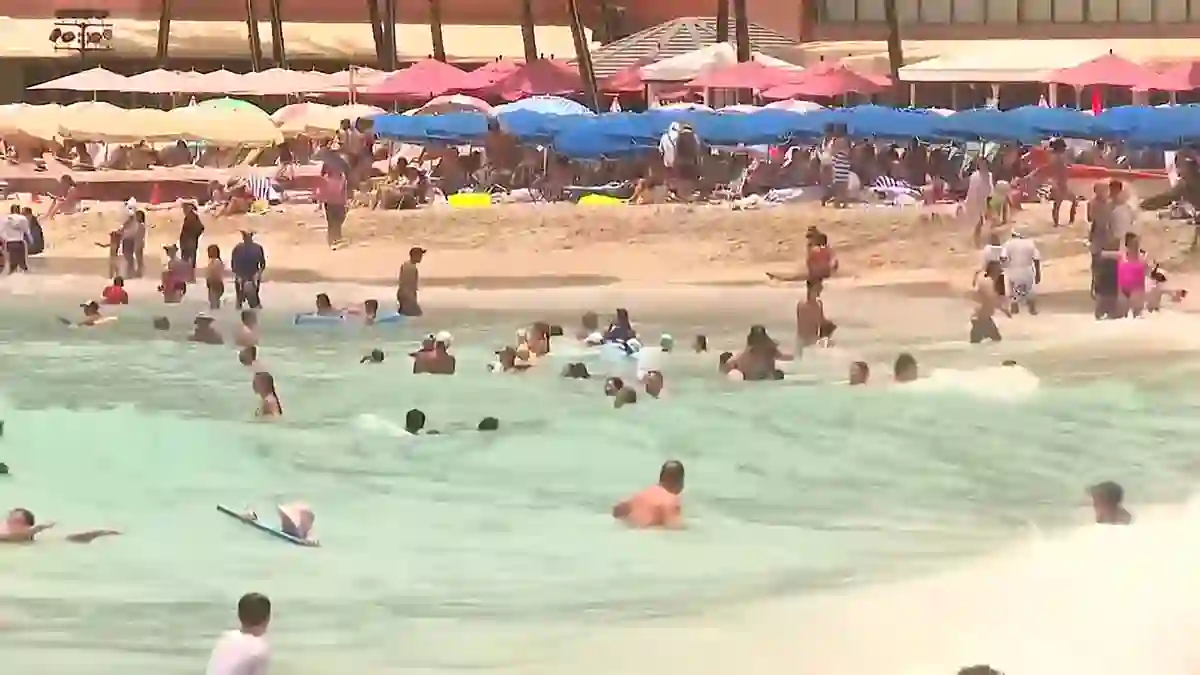You’d expect people to run for higher ground when a tsunami siren starts blaring — but that wasn’t the case on Hawaii’s famous Waikiki Beach this week.
Instead, what unfolded was a bizarre mix of calm, confusion, and even denial, as beachgoers responded in very different ways.
Tsunami Warning Sparks Mixed Reactions
On Tuesday afternoon, a powerful 8.8 magnitude earthquake struck off the coast of Russia’s Kamchatka Peninsula.
That quake set off tsunami alerts not just in Hawaii, but also in Alaska and along the U.S. West Coast.
As sirens began echoing across Oahu, some people packed up and left Waikiki Beach right away.
But surprisingly, others kept swimming, lounging on the sand, and seemingly pretending like nothing was happening.
Videos from the scene show some locals completely ignoring the warnings while others watched in disbelief.
“It’s Not a Joke,” Say Locals
Rami Abdallah, who lives on Oahu, didn’t hesitate to act when the warning came.
“I went straight home,” he told Hawaii News Now. “When there’s a tsunami warning, people should be very serious about it.
It’s life-threatening — it’s not something to joke about.”
Another resident, Asher Kwon, said he’s seen enough tsunami footage to know the danger is real.
“Me personally, I wouldn’t be on the beach,” he said.
“I felt kind of scared for those people, just in case something did happen.”
Tourists and Bystanders Share Their Concerns
Suzanne Lee-Wen, who was visiting Waikiki, called the decision to stay on the beach “daring.”
She said it was risky because you just never know how quickly things can change with the ocean.
“It was a little dangerous,” she added, especially with swells possibly coming in without much warning.
To make things even more concerning, videos on social media showed people on high-rise balconies clapping and cheering as the warnings played out — behavior some residents found disturbing and irresponsible.
Warning Timeline and Tsunami Alert Updates
The Pacific Tsunami Warning Center issued the first alert at around 2:45 p.m. local time on Tuesday.
It predicted that Kaua‘i’s north shore would be the first hit, around 7:10 p.m., with other islands like Oahu and Maui seeing waves shortly after.
Thankfully, the worst-case scenario didn’t unfold.
By 10:38 p.m., officials downgraded the tsunami warning, telling residents there was no longer a threat of a major wave striking the islands.
Waves Arrive but Do Little Damage
In the end, Honolulu experienced waves about one foot higher than normal.
In Kahului, Maui, the largest waves were recorded at 5.7 feet — noticeable but not devastating.
Authorities canceled all tsunami-related advisories by Wednesday afternoon.
“Tsunami wave heights across the state of Hawaii are now below advisory levels and are continuing to diminish,” the warning center confirmed.
Still, they cautioned that small sea level changes and unusual currents might stick around for a few more hours.
Emergency Officials Explain the Alert System
Molly Pierce, public information officer for Honolulu’s Department of Emergency Management, said that tsunami warnings are issued in stages — three hours, two hours, one hour, and thirty minutes before the expected wave arrival.
Thanks to that system and the quick response from local officials, Hawaii was able to avoid disaster this time.
But the incident served as a stark reminder: when the sirens go off, it’s better to be safe than sorry.

